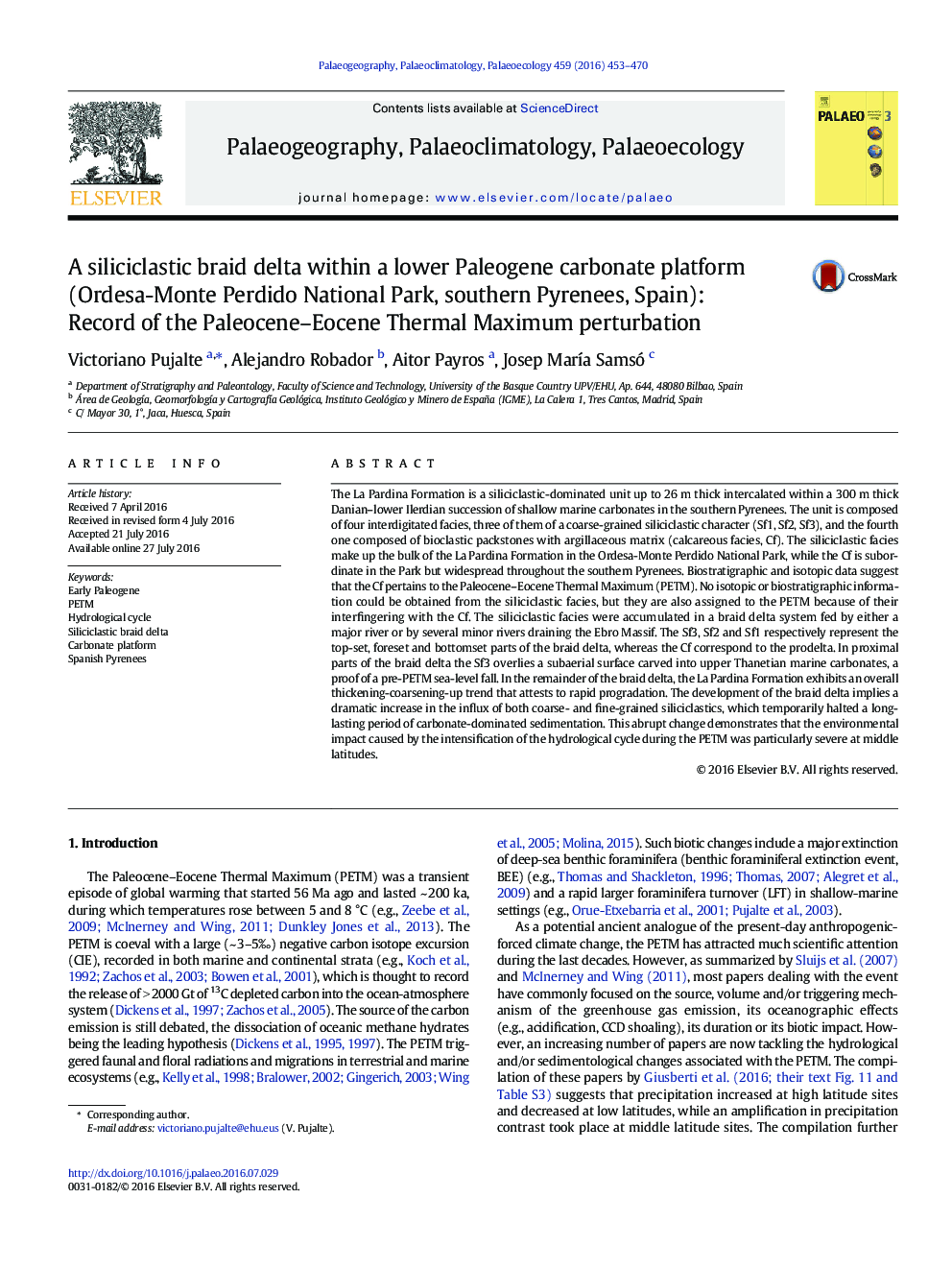| Article ID | Journal | Published Year | Pages | File Type |
|---|---|---|---|---|
| 4465648 | Palaeogeography, Palaeoclimatology, Palaeoecology | 2016 | 18 Pages |
•A coarse-grained siliciclastic unit is embedded within carbonate platform deposits.•Sedimentological features suggest this unit was accumulated in a braid delta.•Biostratigraphy and isotopes show that the braid delta developed during the PETM.•The siliciclastic input to the braid delta driven by enhanced seasonality•Lithologic changes induced by the PETM more prominent at middle latitudes
The La Pardina Formation is a siliciclastic-dominated unit up to 26 m thick intercalated within a 300 m thick Danian–lower Ilerdian succession of shallow marine carbonates in the southern Pyrenees. The unit is composed of four interdigitated facies, three of them of a coarse-grained siliciclastic character (Sf1, Sf2, Sf3), and the fourth one composed of bioclastic packstones with argillaceous matrix (calcareous facies, Cf). The siliciclastic facies make up the bulk of the La Pardina Formation in the Ordesa-Monte Perdido National Park, while the Cf is subordinate in the Park but widespread throughout the southern Pyrenees. Biostratigraphic and isotopic data suggest that the Cf pertains to the Paleocene–Eocene Thermal Maximum (PETM). No isotopic or biostratigraphic information could be obtained from the siliciclastic facies, but they are also assigned to the PETM because of their interfingering with the Cf. The siliciclastic facies were accumulated in a braid delta system fed by either a major river or by several minor rivers draining the Ebro Massif. The Sf3, Sf2 and Sf1 respectively represent the top-set, foreset and bottomset parts of the braid delta, whereas the Cf correspond to the prodelta. In proximal parts of the braid delta the Sf3 overlies a subaerial surface carved into upper Thanetian marine carbonates, a proof of a pre-PETM sea-level fall. In the remainder of the braid delta, the La Pardina Formation exhibits an overall thickening-coarsening-up trend that attests to rapid progradation. The development of the braid delta implies a dramatic increase in the influx of both coarse- and fine-grained siliciclastics, which temporarily halted a long-lasting period of carbonate-dominated sedimentation. This abrupt change demonstrates that the environmental impact caused by the intensification of the hydrological cycle during the PETM was particularly severe at middle latitudes.
Graphical abstractFigure optionsDownload full-size imageDownload high-quality image (531 K)Download as PowerPoint slide
